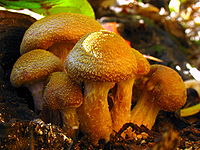
Jasmonic acid biosynthetic genes TgLOX4 and TgLOX5 are involved in daughter bulb development in tulip (Tulipa gesneriana)
Sign Up to like & getrecommendations! Published in 2022 at "Horticulture Research"
DOI: 10.1093/hr/uhac006
Abstract: Abstract Tulip bulbs are modified underground stems that originate from axillary meristems of mother bulb scales. Hormones, including jasmonic acids (JAs), play key roles in the regulation of tulip bulb development. Here, we compared variations… read more here.
Keywords: daughter bulb; tglox4 tglox5; bulb; bulb development ... See more keywords

First report of Tulip Virus X infecting tulip (Tulipa gesneriana) in Korea.
Sign Up to like & getrecommendations! Published in 2022 at "Plant disease"
DOI: 10.1094/pdis-12-21-2762-pdn
Abstract: Tulip virus X (tulip virus X, TVX) is a member of the genus Potexvirus (family Alphaflexiviridae) and is a positive single-stranded RNA virus. TVX was described first in Scotland (Mowat 1982), followed by several countries… read more here.
Keywords: genbank; tvx; virus; first report ... See more keywords

Transcription factors TgbHLH42-1 and TgbHLH42-2 positively regulate anthocyanin biosynthesis in Tulip (Tulipa gesneriana L.).
Sign Up to like & getrecommendations! Published in 2023 at "Physiologia plantarum"
DOI: 10.1111/ppl.13939
Abstract: The floral colouration of tulip flowers is one of the most prominent traits contributing to its high ornamental value. The molecular mechanisms of petal colouration remain elusive in tulip species. In this study, we performed… read more here.
Keywords: biosynthesis; tgbhlh42; tgbhlh42 tgbhlh42; transcription factors ... See more keywords

Concordance and discordance in SLE clinical trial outcome measures: analysis of three anifrolumab phase 2/3 trials
Sign Up to like & getrecommendations! Published in 2022 at "Annals of the Rheumatic Diseases"
DOI: 10.1136/annrheumdis-2021-221847
Abstract: Objectives In the anifrolumab systemic lupus erythematosus (SLE) trial programme, there was one trial (TULIP-1) in which BILAG-based Composite Lupus Assessment (BICLA) responses favoured anifrolumab over placebo, but the SLE Responder Index (SRI(4)) treatment difference… read more here.
Keywords: trial; placebo; bicla; sri ... See more keywords

POS0683 NOVEL STRINGENT OUTCOME MEASURES APPLIED TO THE PHASE 2 AND 3 ANIFROLUMAB TRIALS
Sign Up to like & getrecommendations! Published in 2021 at "Annals of the Rheumatic Diseases"
DOI: 10.1136/annrheumdis-2021-eular.702
Abstract: Patients with systemic lupus erythematosus (SLE) who received anifrolumab, a type I interferon receptor antibody, had greater BILAG–based Composite Lupus Assessment (BICLA) response rates vs placebo at Week (W)52 in the phase 2 MUSE1 and… read more here.
Keywords: response; placebo; bicla; astrazeneca ... See more keywords

Trichoderma polysporum as possible weak pathogen of tulip bulbs and roots
Sign Up to like & getrecommendations! Published in 2017 at "Plant protection science"
DOI: 10.17221/10474-pps
Abstract: In the spring 2000, on tulip plantations in south-eastern Poland, spots of died-off plants were observed. The inhibited growth, wilting of leaves and yellowish necrosis on roots and scales surface occurred especially in low-lying areas.… read more here.
Keywords: bulbs roots; polysporum possible; trichoderma polysporum; tulip ... See more keywords